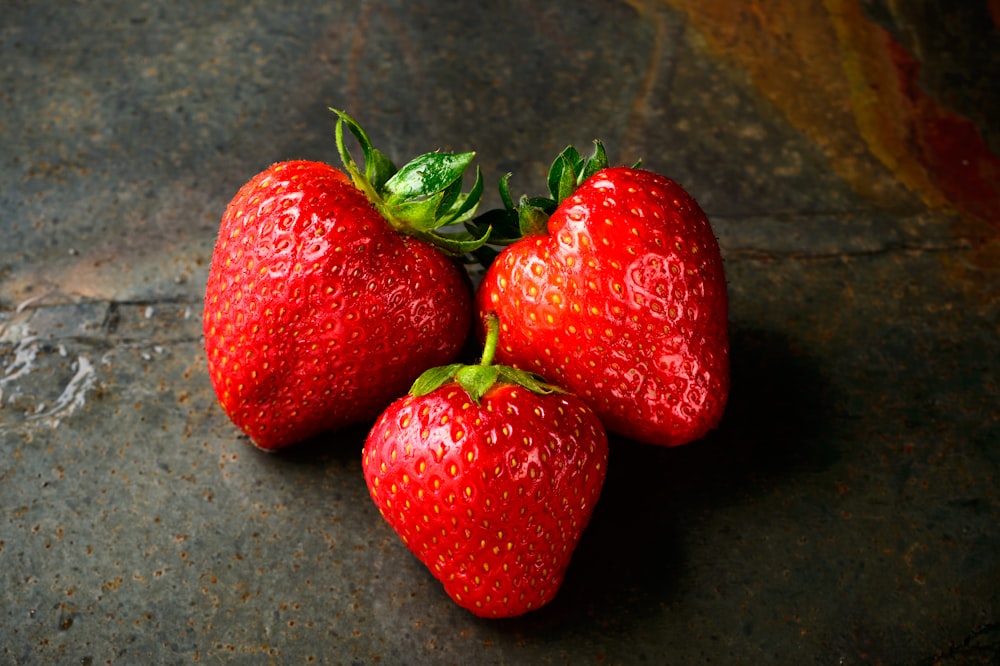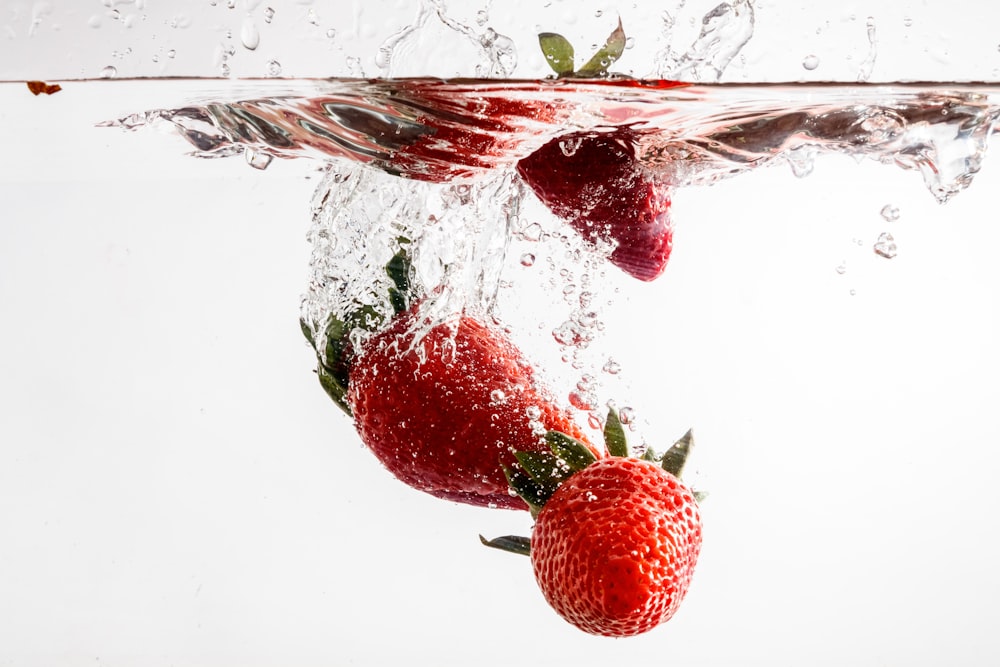Are strawberries low fodmap? Since the most recent Monash University FODMAP Diet App update, there has been a slew of criticism on social media. What is going on? Strawberries have been reclassified from food that includes only minor amounts of FODMAPs to one that requires accurate portion control. This has left some of you annoyed and perplexed. We completely understand why this news would make anyone angry!
About Strawberries

Strawberries, cultivated by the kind Fragaria x ananassa, have been tested by both Monash University and FODMAP Friendly. Both Monash University and FODMAP Friendly initially advised 10 medium (140 g) strawberries as a meal amount. Monash University claims that no FODMAPs are present in this fruit, while FODMAP Friendly does not mention them.
The FODMAP Friendly Stance On Strawberry FODMAP Content
It’s essential to check the ingredients list of a product before you purchase it. We strive to inform and educate our community about FODMAP contents in meals at FODMAP Friendly by teaching people with the celiac disease how they can comply with the latest food research while still eating well. Another organization claiming strawberries are free from FODMAPs has made this claim; however, strawberries have been tested recently and shown that while they are low-FODMAP, they are not completely free from FODMAPs.
Strawberries are the second most popular fruit in terms of consumption, according to one study. However, because of their high fructose content, they are not recommended on the low FODMAP diet (which we continue to try to make simpler for you!). We wanted to take this chance to remind our readers that everything written by FODMAP Friendly’s team of Dietitians and Nutrition Scientists is evidence-based.

The concentrations of FODMAPs vary according to the source of origin, maturity, and processing methods. However, FODMAP Friendly independently tests for FODMAP content in the food at an Australian National Association of Testing Authorities (NATA) accredited laboratory. Our laboratory is highly regarded, based in Melbourne, and supports dairy
farmers with Dairy Farm Assurance evaluations. It is also the region’s leading expert in milk analytical services and dairy product testing.
Why Did The FODMAP Rating Of Strawberrie Changes?
Strawberries have gone from being a ‘eat freely’ food with extremely low FODMAP levels to one that has low, moderate, and high FODMAP serving sizes. To put it another way, Monash University is now advising that you only eat modest strawberries during the first phase of the low FODMAP diet.
So, Why Has This FODMAP Level Changed?
We are learning that a variety of elements may impact FODMAP levels as the science around the low FODMAP diet grows. There is no such thing as a “normal” strawberry. It’s conceivable that strawberries grown and harvested in various locations and stored in different ways have varying amounts of FODMAPs.
This means that if you are sensitive to FODMAPs, eating fruit from farms in one part of the country may be lower in FODMAPs than fruit from another region (and vice versa). Furthermore, the ripeness of the strawberry might have an impact on FODMAP levels. We know that as strawberries mature, their fructose contents rise; this may be a significant factor when it comes to high FODMAP strawberries.
The bottom line is that strawberries have a wide range of FODMAP levels, owing to many factors. The more Monash University samples, the more knowledge they acquire.
How To Buy
Sweetness is not always signified by the color of a berry. You might be drawn to an all-over deep red color, but many berries have been developed and hybridized for appearance rather than flavor — and taste is essential! Before purchasing, ask to try a berry. Even if they don’t advertise it, many markets will allow you to do this. However, avoid berries with white or green tops or shoulders in general. Strawberries come in a variety of sizes, ranging from thimble size to golf ball size; therefore, double-check your recipe to see if a certain size is required, such as “medium.”
Examine the berries for firmness, plumpness, and slightly dry quality. When very fresh, they may have a glisten to them. They should have their green tops remaining, which should look vibrant and not withered. If the berries are kept in a clamshell-type container that has been sealed shut, turn it over to check the berries on the bottom and make sure no one is crushed or moldy.
Why There Is A Difference Between FODMAP Content In Fresh And Dried Strawberries?
Fresh and dried strawberries differ considerably in their FODMAP content, as you can see from the chart above. To get rid of the water, fresh fruit is dehydrated before being dried. Concentrating the sugars and FODMAPs (in this case, fructose) present in fresh fruit while eliminating the water content yields a concentrated form of these components that are far more difficult to digest.
Dried fruit, on the other hand, shrinks in size compared to the fresh fruit’s original volume – fresh strawberries are considerably bigger than their dried counterparts! This is why FODMAP serving sizes are so crucial when it comes to eating low FODMAP.
How To Prep And Use
Remove the stems from strawberries before using them to ensure that no parts of the fruit remain on the stem. They are fantastic raw, in salads, over cereal, sliced into yogurt, or used in recipes like our Roasted Strawberries or Fresh Strawberry Tart. Bring berries to room temperature before serving for maximum flavor and juiciness if eating them alone.
How To Store
All berries are delicate, and it is preferable to consume them as soon as possible after purchase. Keep them refrigerated and unwashed until ready to serve. I turn to my mother’s tried-and-true storage method for advice.
- Remove any moldy berries from the bunch, as they can spread the infection.
- Place in a paper towel-lined container in a single layer.
- Seal, but not at all airtight.
- Keep in the fridge.
- If eating as is, bring to room temperature before serving for ideal flavor.
Varieties
The majority of the berries we consume for snacks and in our cooking will be a hybrid between Fragaria x ananassa. The woodland strawberry, seen above, is a type of Fragaria vesca. Fraises des Bois are diminutive, dark red berries that grow on vines in the woods. They’re also known as alpine strawberries or “wild” strawberries.
Strawberries are available year-round, but certain kinds ripen earlier, mid-season, or later. While some persons react to strawberries by developing allergic symptoms, there is research to suggest that the response is linked only to a protein for red anthocyanin synthesis produced at the time of strawberry ripening named Fragaria allergen 1.
There are white/off-white types that are devoid of Fra a1, which may be an alternative for people who have experienced sensitivity to the red berry. One plant called “Sofar” is claimed to be good, but it is difficult to come by.
Similar Articles
- Curry Leaves Potato Chips
- Is Popcorn Low FODMAP?
- Low FODMAP Vegan Curried Potato And Spinach
- Is Broccoli Low FODMAP?
- Is Sushi Low FODMAP?
Leave a Reply